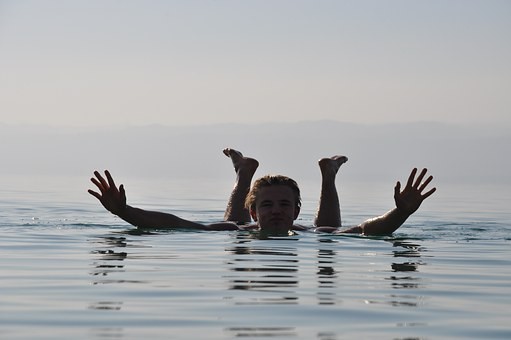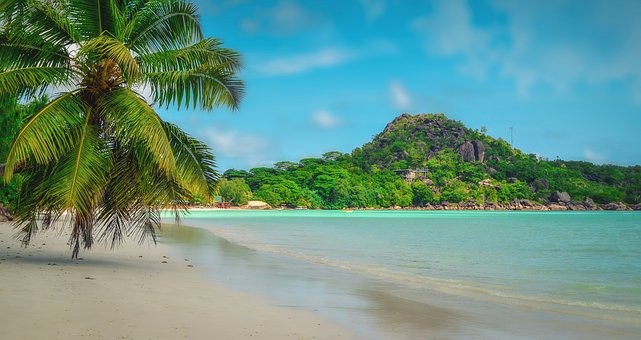 1. The Great Barrier Reef, Australia
1. The Great Barrier Reef, Australia
The largest coral reef in the world covers more than 133,000 square miles and is composed of over 2,900 individual reefs and 900 islands. If you’re looking for an exotic, once-in-a-lifetime getaway, this may be just that so it’s best to see it now. The increasing environmental challenges, rising ocean temperatures and pollution, have been eroding this living wonder for years and it could be destroyed within the next 100 years.
Famous for its unparalleled natural diversity, the Great Barrier Reef is one of the seven natural wonders of the world and it is the only living thing on Earth that’s visible from space. It was recently named the world’s best place to visit by US News and World Report. Part of what makes the reef the world’s premiere travel destination is the endless list of unique activities that visitors can participate in. Day trips to the islands in the Great Barrier Reef area combine the best of both worlds with plenty of opportunities to swim, scuba dive and snorkel among the underwater wildlife as well as experience the beauty of tropical rain forests and sandy beaches.
The reef has suffered from the effects of climate change, but it boasts unparalleled ecological diversity and much of it is hidden below the water’s surface. So…for those who prefer to stay in a boat, these magnificent wonders are also visible from glass-bottom boats.
 2. The Dead Sea
2. The Dead Sea
The ancient and salty Dead Sea is the site of both history and healing. It is one of the world’s saltiest bodies of water – eight times saltier than any ocean. This makes the sea impossible to swim in but makes our bodies buoyant and we naturally float without effort. The salt intensity of the Dead Sea makes it impossible for sea life or plants to flourish. In fact, it was just recently discovered that the only life in this sea is bacteria. However, the mud found in the Dead Sea floor is found to be healing and great for one’s skin. It’s high in magnesium, sodium, potassium and calcium – making it of a much higher quality healing agent than can be found in a spa.
The sea is not only rich in salt and minerals, it is also rich in history. It is almost three million years old and is said to be first investigated by Herod the Great, the Roman King of Judea. Cleopatra is also thought to have taken advantage of the healing qualities of the mud and waters and it has been found that the Egyptians used the asphalt it produced to help in the mummification process.
All this history and health benefits will not keep the Dead Sea from disappearing. In the last 40 years the lake has shrunk by a third and sunk 80 feet. So experts believe it could disappear in as little as 50 years, due to neighboring countries drawing water from the Sea’s only water source – the River Jordan.
 3. Glacier National Park, Montana
3. Glacier National Park, Montana
Glacier National Park contains an amazing 734 miles of trails to explore…it is a dream come true for hikers and bikers. Whether you’re an amateur hiker or a seasoned mountaineer looking for a challenge, Glacier’s bountiful and raw beauty has got you covered. And when the day is ending, who doesn’t love a good sunset? With Montana’s reputation as the ultimate Big Sky Country, nothing reveals the vastness of the sky like sunset. Make sure you have time to experience this panoramic view of Glacier.
The lakes and streams of Glacier National Park each enrich the Glacier ecosystem, and because of that, as well as their jaw-dropping beauty, they are protected as National Wild and Scenic Waterways. Therefore, they are the perfect places to enjoy long summer days. You can have an exhilarating whitewater adventure or enjoy a mellow, relaxing afternoon float.
In a time where the whole world is connected all the time, solitude can be a treasure and the raw, natural spaces of Glacier National Park are an ideal place to enjoy peace, quiet, and solitude. But once home to more than 150 glaciers, Montana’s majestic national park now has fewer than 25. Rapid climate change could see that number shrink to zero by 2030, which would not only leave the park without a glacier, but also severely disrupt its ecosystem.
 4. Seychelles
4. Seychelles
The Seychelles are some of the most beautiful beaches in the world. The epitome of a tropical paradise, the Seychelles is a collection of 115 islands in the Indian Ocean with powder-fine sand, amazing rock formations, and crystal-clear water. Unlike many diving locations, several parts of the island have completely intact coral reefs. The underwater world is rich in color and activity. The diverse fauna is multi-colored and the variety of local birds and animals is spectacular.
Culinary experiences will delight you. There is no other place on earth that provides such excellent Creole cuisine. The country’s culinary tradition, which is based mainly on fish and seafood, reflects the diversity of the indigenous cultures with its mixture of Asian, European and African influences. To add to the luxury experience, The Seychelles is home to numerous luxury resorts.
All of this beauty and culture could come to an end soon because the islands are in danger due to beach erosion, after already seeing a devastating coral die-off. Some experts believe that in 50 to 100 years, the entire archipelago could be submerged.
 5. Alaska
5. Alaska
Alaska, simply put, is beautiful. The vastness of the unspoiled wilderness is truly captivating with its waterfalls, massive glaciers, snowcapped mountains, and deep azure lakes. It’s one of the truly magical and unspoiled places left in our country.
You’re guaranteed to have more than one amazing wildlife encounter. Wilderness boosts raw experiences with animals such as moose, elk, bears, wolves, bald eagles, whales, etc. Whale watching is a favorite and something you won’t easily forget. And floating up to a massive glacier that is the size of a skyscraper is unbelievably humbling.
Alaska’s culture dates back hundreds of years and you can easily see the cultural influences in the small native towns. Indications of the past date back to ice age nomads and fur traders and extends to the miners of gold around Skagway–the gateway to the Klondike in the 1800’s. If you like seafood, you’ll feel elated to experience the freshest of the fresh. And the king crab legs are divine!
The Alaskan tundra is one of the most distinctive features of America’s northernmost state and the culture is rich – but it is at risk. Climate changes have led to the thawing of the region’s permafrost, which not only damages infrastructure but also dramatically alters the current ecosystem.
 6. The Alps
6. The Alps
Thinking of the Alps brings Switzerland to mind with its crisp snow-covered mountains and green Alpine pastures – and someone yodeling in the distance. The Alps are one of top locations in the world for skiing and have some of the best ski resorts and slopes in the world. And the scenery is beyond words. Many of the mountain peaks are over 4,000 meters high and are a wonder and challenge for hikers and photographers. The Matterhorn isn’t the most photographed mountain for no reason – it is simply breath-taking.
Each time you travel to a new region of the Swiss Alps you will be treated to new customs and traditions like yodeling and a fascination with cows and their bells. The alpine village life is full of charming little towns where you can feel totally connected to nature and just relax and breathe the clean mountain air. And the food is delightful! Melted cheese fondue has its origins in the Swiss Alps as a dish for poor farmers who were utilizing their left-over ingredients during the tough winter months. During your journey you can dig into this and other regional delicacies while sipping some fine Swiss wine.
All of this culture and beautify is in danger. Because the Alps sit at a lower altitude than the Rocky Mountains, the range is more susceptible to climate change. Around 3% of Alpine glacial ice is lost per year and experts believe that the glaciers could disappear entirely by 2050.
Megan Gibson’s article – “10 Amazing Places to Visit Before They Vanish” – Time Online – 2014 was utilized for the construction of this article.




